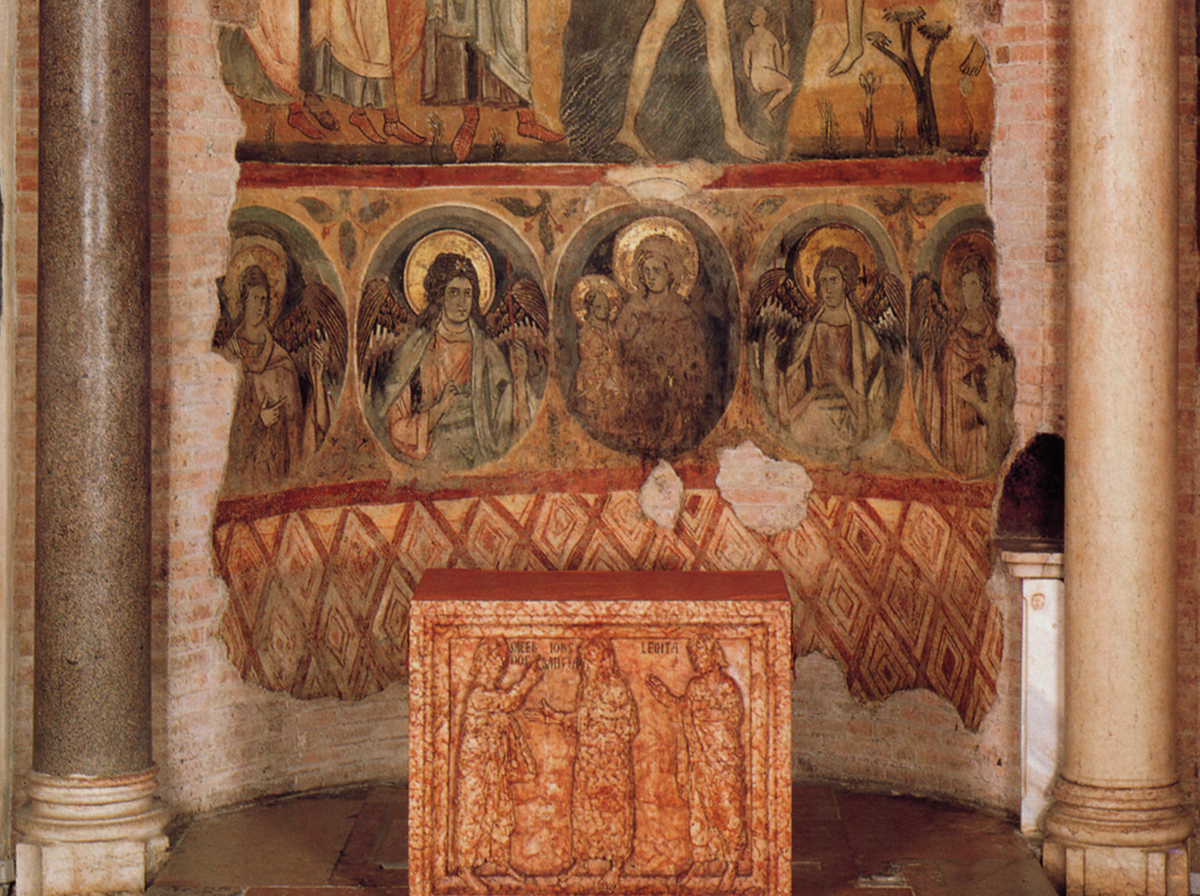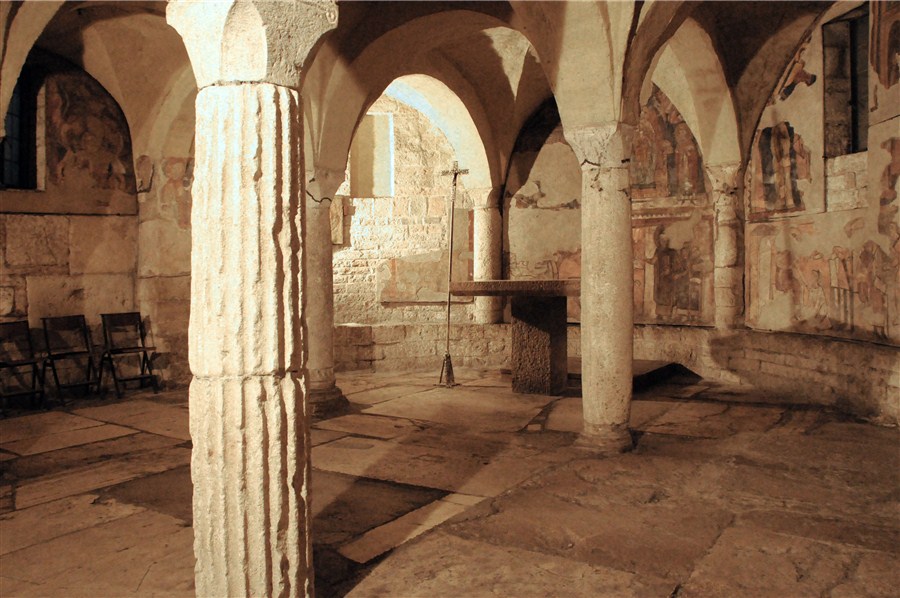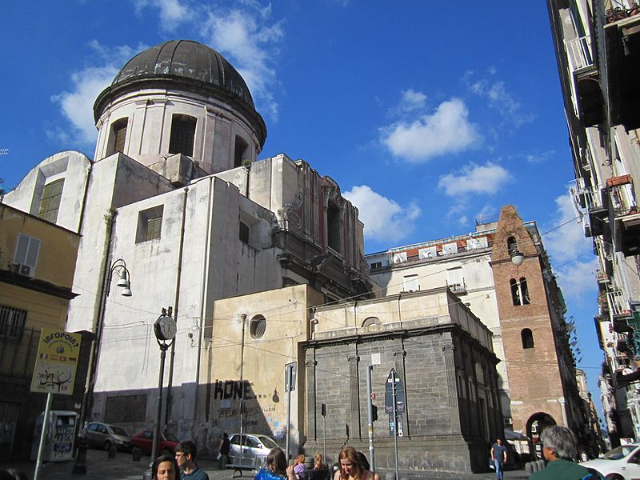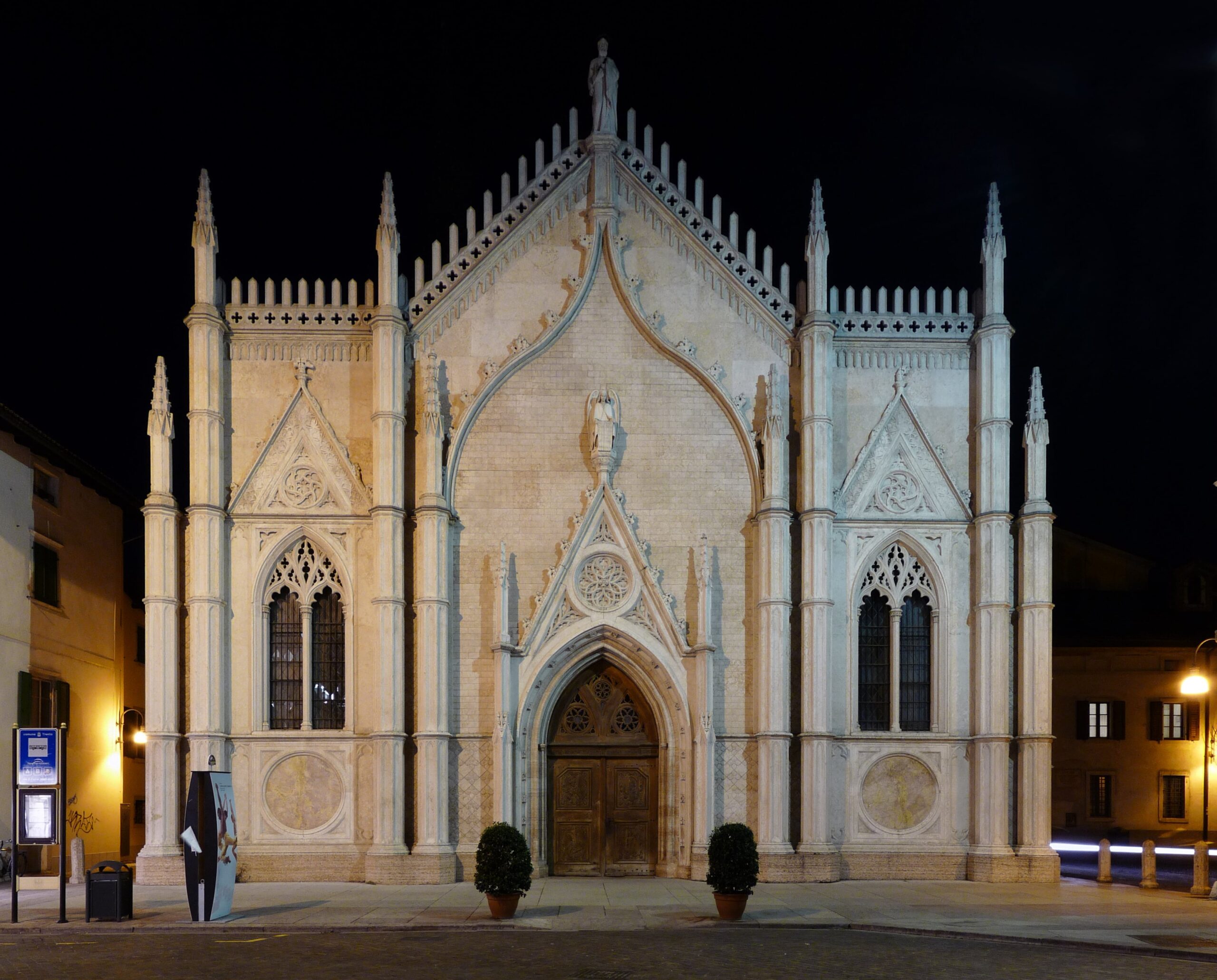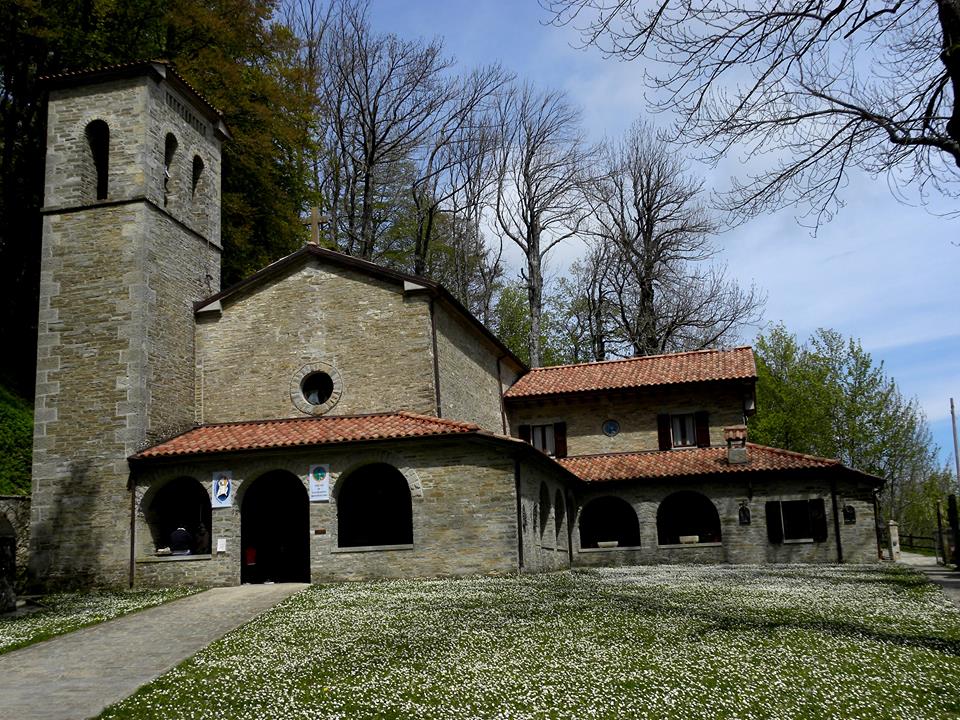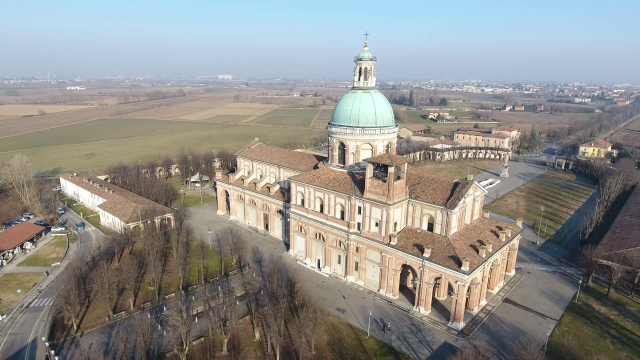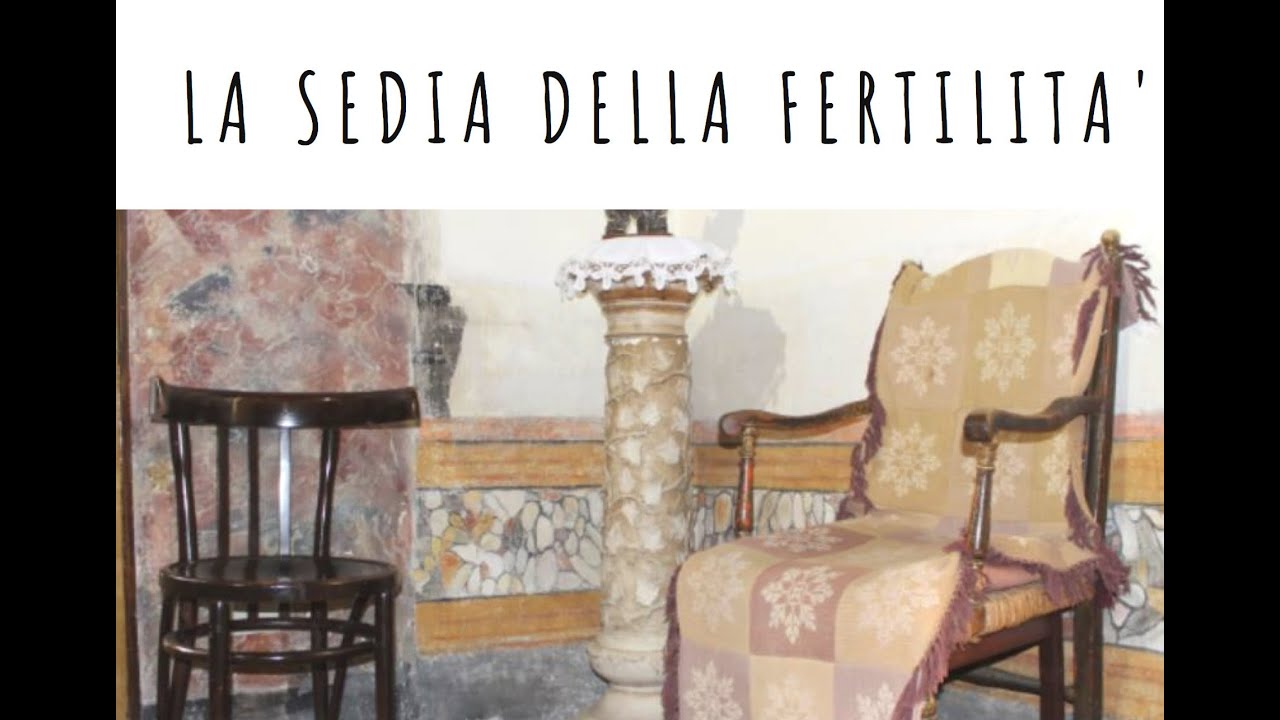Designed by Benedetto Antelami and built between 1196 and 1216, the Baptistery of Parma is one of the most significant monuments of the transition from Romanesque to early Gothic. The octagonal structure, made of pink Verona marble, rises in height with four orders of loggias with architraved openings.
The portal of the Virgin
This is the portal that faces north and overlooks Piazza del Duomo: from this entrance the Bishop entered in solemn form.
The door takes its name from the crowned Virgin, holding a flower and the blessing Child, who occupies the upper lunette. Just below, one notices a double wave of water that symbolically alludes to Baptism. Shifting his gaze to the door jambs, the observer will notice two family trees, describing the history of the Messiah’s descendants: that of Jacob ending with Moses, a prefiguration of Christ, and that of Jesse from whom Mary, mother of Jesus, is derived. The door is completed by the upper frieze, where the twelve apostles find their place. Inscribed on the lintel is the name of the "sculptor Benedictus" and the beginning of the building site, 1196.
The portal of the Redeemer
This is the main portal of the Baptistery and faces west: it is framed by two jambs on which are depicted the works of mercy and the six ages of man with the parable of the vineyard.
Again, the portal is named after the contents of the lunette, which depicts the Redeemer, seated on a throne and dressed in a red robe, a symbol of his divine nature. There is also the figure of St. Paul, which connects to the scenes in the lintel below, where two angels with trumpets awaken the dead called to receive the prize in Heaven or the endless punishment in Hell. Again, the frieze above the lunette is dedicated to the twelve apostles.
The portal of the Baptist
Through this doorway once entered the catechumens, that is, those undertaking the journey of faith to be admitted to the Sacrament of Baptism.
The lunette narrates the devotional tale of Indian origin: it is the story of the Indian prince Josaphat, who, at the hands of the old hermit Barlaam, converts to Christianity. In the center of the scene is a tree, on which a young man is intent on taking honey from a beehive, heedless of the presence below of a menacing dragon, a symbol of death. Two mice, meanwhile, are gnawing at the root of the tree, while on either side the sun and moon ride their chariots, allegories of time passing inexorably.
The tiles with the Zooforo
Along the base of the Baptistery runs the Zooforo. It is an almost uninterrupted series of seventy-five panels, the authorship of which is attributed to Benedetto Antelami and his workshop.
The subjects depicted are of symbolic and fantastic character: hellish and sea monsters, centaurs, sirens, liocorns, basilisks, griffins, dogs, birds, horses and human figures. Four more tiles are added to the series of seventy-five: they represent the four virtues (Chastity, Charity, Faith, and Hope) and provide the key to understanding the entire Zooforo.
The Dome
The dome of the Baptistery was frescoed in the third decade of the 13th century by master craftsmen from the Po Valley, influenced by Byzantine iconographic models.
The vault is divided into six concentric horizontal bands: the first band (starting from the bottom) depicts episodes from the life of Abraham; the second depicts the life of John the Baptist; the third depicts the glorious Christ with the Virgin and the Baptist, surrounded by a theory of prophets and kings; the fourth depicts the Apostles and Evangelists; the fifth depicts the heavenly Jerusalem with its walls, followed by the sky with the fixed stars; and finally, the Empyrean, red as the color of love. The dome represents the most prominent part of the Baptistery and constitutes a peculiar example of an umbrella dome: from the apex in the keystone sixteen ribs branch out in a radial arrangement.
The perimeter niches and basins
The inner perimeter of the building is defined by sixteen niches, which house important votive fresco cycles. The frescoes were created in the 14th-15th centuries by Emilian masters such as the Maestro di Gerardo Bianchi, the Maestro del Trionfo della Morte, Niccolò da Reggio, and Bertolino da Piacenza.
The connecting basins between the basement part and the loggia present a rich sculptural decoration of the Antelamic school. The constructive peculiarity of these basins, carved from the same block of stone as the lunettes of the exterior portals, is that they are carved on both sides, reinforcing the iconographic symbolism of the Baptistery’s architecture.
The baptismal basin
In the center of the building is the large octagonal font made of Verona stone, raised on double steps that follow its shape.
It has no special sculptural decoration, except for the delicate profiles that follow its shape. The basin, which was filled with water for baptism by immersion, encloses another smaller basin in the shape of a four-leaf clover, a symbolic reminder of the cross. It was in this smaller basin that the celebrants found their seats.
The baptismal font
A second baptismal font, used for infusion baptism since the 14th century, is located in the southwest niche.
The font basin features a plant decoration (the tree from the garden of Paradise)and, a dense tangle of vines among which some animals also take their place. The base of the font consists of a crouching lion with prey between its paws. While the lion is symbolic of Christ victorious over death, believers resurrected to new life through baptism are represented by the animals that inhabit the foliage of the garden of Paradise.
The altar
In the east apsidal niche is the altar, a marble ark of cubic form.
On the front side appears the Baptist, a Priest and a Levite who point, alluding to Christ, the true Priest., with their gestures figuratively summarize the theological meaning of the Eucharistic table.
The antelamic months
In the first gallery on the east side are the 12 months and 2 seasons attributed to the Antelamic building site of the Baptistery, which did not complete the full cycle, as traces of the tools of the workmanship still reveal. They were placed where they are by the dome painters in the fourth decade of the 13th century. In the sculptural series of the months, one can observe an interpretive direction peculiar to the Antelamic worksite, which sculpts the work that characterizes each month, work performed by figures with traits of elegance and nobility, levity and elegant dress, even in toil, as an allegory of work redeemed by Christ.
